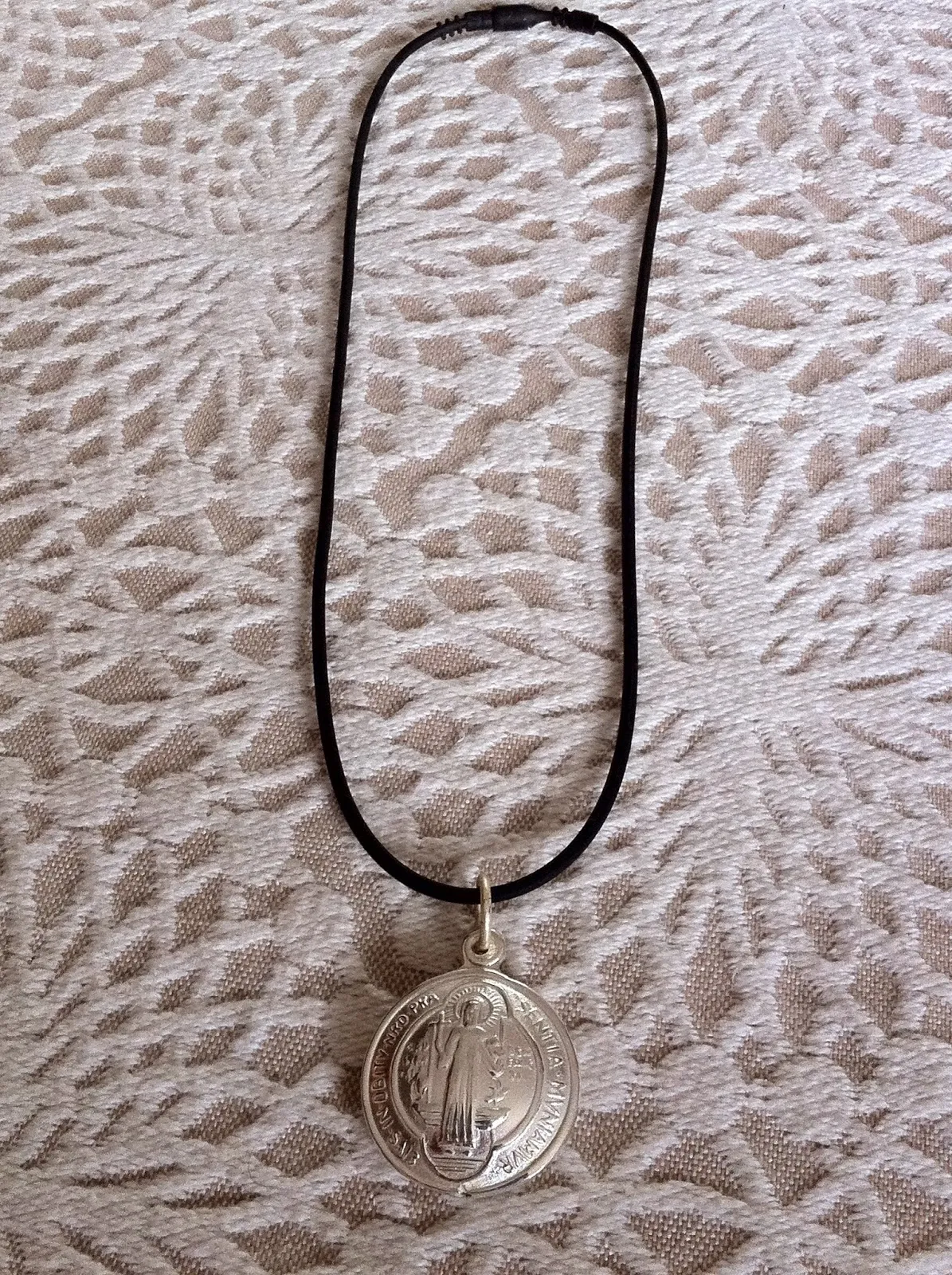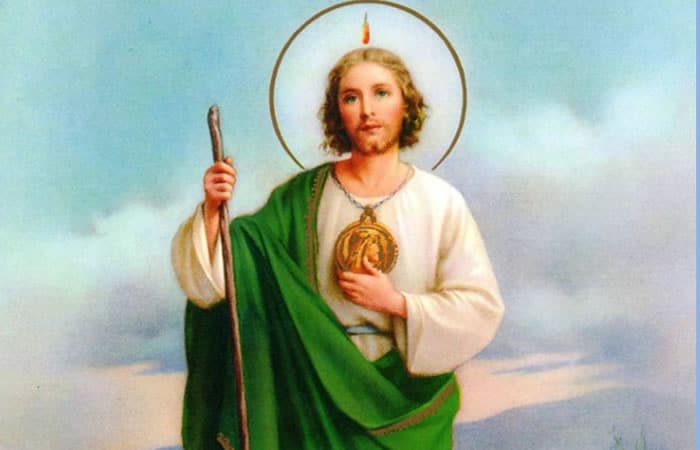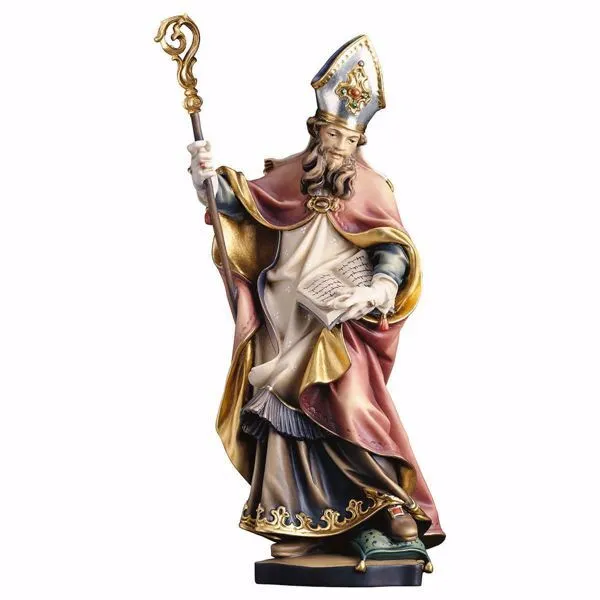The Miraculous Medal of Saint Benedict: What it is and its History
Thanks to the reading of this article you will be able to know what the Saint Benedict Medal is , its history will also be investigated. This article is intended to be informative as well, it will also reveal how the Saint Benedict Medal is worn .
What is the Saint Benedict Medal?
The Image of the Saint Benedict Medal in the Catholic religion serves as an object carried by the most fervent devotees, it owes its name to the fact that it has the image of Saint Benedict of Nursia engraved on one of its faces, this medal is not only carried by believers of the Catholic religion, in fact, also Orthodox practitioners, Lutherans among others make use of it.
Returning to the same order of ideas, this medal is one of the oldest relics among Christians, those who decide to be bearers of this medal have the theory that it gives them power to stop and fight against the evil that is found. around them.
As it was previously said, one of the sides of this medal represents Saint Benedict of Nursia, the other side has several engraved letters, these letters form a Latin phrase that says « Vade retro Satana» . The origin of this phrase lies in the bible, the book of Mark in verse 8:33.
history of the medal
There are no records about when these medals began to be manufactured, in other words, these medals began to appear long before they began to be taken into account. There are also no records of any kind about when these medals began to have written engravings on one of their faces.
In Germany, in the state of Bavaria, very old paintings were found in which this cross was found. It had very strange engraved letters and no one was able to interpret what they meant, however, this was a mystery that could be clarified thanks to the discovery of an ancient manuscript.
Following the previous idea, the manuscript that was found inside a monastery located in Metten, Germany, was dated 1414 (it is currently protected in a state library in Munich, Germany) and it represented the medal with an image of Benedict of Nursia.
During the year 1647 there were several women to whom the crime of sorcery was attributed, they were accused of trying to damage a monastery belonging to the Benedictines, however, these women denied the event alleging that it was protected by the sign of the Holy Cross that was in the Saint Benedict Medal.
Currently in a library located in the city of Wolfenbüttel, Austria, there is a manuscript which dates from the fourteenth century, it is speculated that said manuscript has the origin of the image and the text that the medal has, but as such there is no place and date that are exact with its origin.
In the year 1742, the then Pope Benedict XIV decided to approve this Medal as an object of great value for the Catholic religion, in addition, with this act a more exact record about the medal began to be had, which is why it is known that In the year 1880 the final design of this medal was reached, a design that is what we currently know, it should be noted that with this medal the 1400 years of the birth of Saint Benedict are also honored.
Over the years, the way of using this medal has varied according to the religious practitioner at the moment, however, how the Saint Benedict Medal is used has variations, for example, there are Catholics who use it with a hanging chain on the neck, others use it on the rosary, there are some who even keep it in their pocket as an amulet, there are many ways to use it.
Deep analysis of the Saint Benedict Medal
Devout Catholics believe that this medal is a way of paying homage to the love of Jesus Christ. All those Catholic practitioners of this Medal have the belief that this medal through faith has amazing powers, for example, power to ward off evil that is close to us.
According to everything said above, it is also said that everyone who is a bearer of this medal will have the power to combat all that temptation or evil instilled by satan, this surprises believers and non-believers because it is the greatest exponent of evil in the world, is the antithesis of our heavenly father.
The Saint Benedict Medal is not the only medal with these properties in the whole world, in fact, there are 6 others besides this one, they are scattered all over the world and there is a theory that they are imbued with a great spiritual power . The Saint Benedict Medal is so famous and popular that it is carried by Catholic parents when performing exorcisms.
Image of the Saint Benedict medal
On one of the sides of the medal is the figure of Saint Benedict, he is seen represented in the following way: In his right hand he carries a cross (it is believed that the Saint had a special adoration towards it), in his left hand carries a book called “The Book of Rules”, this book was written by himself.
This face of the coin has a phrase written in Latin, it means in Spanish “At the time of our death let us be protected by his presence.” Evidently he refers to being protected by San Benito, this is motivated by the fact that he is popularly known as “patron of good death”, a title that San José holds together.
If you appreciate his figure in special detail, you can notice 2 quite interesting symbolisms, the first is that there is a glass of wine which has poison, the faithful say that when Saint Benedict made the sign of the cross a snake came out of it.
Another interesting symbolism is that you can see a bird with a piece of bread, according to the Catholic faithful, this comes as a result of a person with bad intentions who wanted to poison him, however, he could not because when Saint Benedict was going to eat the bread Poisoned, the bird arrived and ate him instead.
On the other side of the medal there are several letters which are nothing more than the initials of a series of sentences which are loaded with strong symbolism. For the analysis of the initials, a numerical order will be followed and the meanings will be in Spanish:
- The corners of the cross read “CSPB” in Spanish: Cruz del Santo Padre Benito
- Vertically to the cross it reads “CSSML” in Spanish: La santa cruz sea mi luz”
- Horizontally it reads “NDSMD” in Spanish: Don’t be the dragon my guide
- The first letters that are in the circle of the medal say “VRS” in Spanish “Retrocede satan”
- Right after it would come «NSMV» in Spanish: Do not advise me bad things
- Separated, on the left side it says “SMQL” in Spanish: It’s bad what you offer me
- Finally it says “IVB” in Spanish: Drink your own poison
- At the top center is the Latin word “PAX” in Spanish PAZ
- On some medals it is normal to read “IHS” or “JHS” in honor of the monogram of Jesus Christ
papal pardon
This medal became so popular among the Catholic faithful that Pope Benedict XIV began to give certain indulgences to all those who wore them as long as they met certain conditions. The indulgence is not the forgiveness of the sins committed, rather it exempts the person from the penance that they would have to pay. The requirements to receive such indulgence are:
- All those who carry the Medal of Saint Benedict, in their final hours, will enjoy great spiritual protection, as long as they accept God the almighty father and go to him with a repentant heart.
- Those people who in their final moments choose to receive communion, or at least invoke the name of Jesus with a heart full of repentance for the sins committed during their stay on earth.
- Those who respected and made the biblical sacraments
- Those who pray to God during the holy holidays, be faithful devotees who pray the Holy Rosary, visit those who are sick and help them in those moments of sorrow, help and teach the faith to the poor or participate in the Holy Mass.
The pope also began to grant partial indulgences, that is, they granted a certain number of days replacing the corresponding penalty for sins, these indulgences were distributed as follows:
- 100 days of indulgence were granted to all those who prayed a prayer before participating in the Holy Mass, even if they prayed before communion.
- 200 days for all those who decide to visit the sick for a week, also applied to visit the church during that period of time or teach children about the faith.
- 7 years of indulgence were granted to those faithful Catholics who celebrated masses or if they were only present, it was also valid to pray for the well-being of others or those rulers who were in charge of the correct political functioning, also if a person decided to accompany a sick person during all saints day.
- Every person who during Holy Week (understood from Holy Thursday to Resurrection Sunday) after having made the confession of their sins, has received the Eucharist, will pray for the well-being of the Holy Catholic Church, the needs that the Papa, you’ll get as many indulgences as you think you need.
- Those people who by their own decision decide to convert a sinner to the Christian path, or those who by giving advice to those misguided souls manage to change the course of a person’s life will obtain the indulgence of a third of all the sins they have committed.
- Anyone who voluntarily decides to pray for the well-being of the Benedictine order will not only receive an indulgence for their sins, but will also receive a share for all the good deeds that this order performs.
Despite the fact that the Pope, the highest representative of the Holy Catholic Church, granted these types of forgiveness, his custom was not accepted and, in fact, was quite criticized by practitioners of other religions. In this sense, indulgence could be considered a completely traditional tradition. Catholic, in other religions it was thought that this was a commercial act because the only one capable of forgiving sins or not is God.
Saint Benedict Medal in other presentations
The Medalla de San Benito reached such a high popularity within the practicing Catholic faithful, that they decided to adapt it in other presentations such as what is now known as the crucifix of good death, this has been recognized and promoted by the Holy Church. Catholic as an aid to those devout practitioners in times of undue temptation or in their final hours.
The Pope not only granted full indulgence to all those devout faithful who wore the Medal, he also granted it to all those who were bearers of the cross of good death. Those devotees who feel a trust in the Holy Cross from the heart, will be rewarded with full indulgence of their sorrows at the time of their death.
Those who choose to confess or receive communion with a repentant heart for their sins, devoutly invoke the name of Jesus as their only savior, and accept that death was determined by God will also receive the indulgence.
All those who have been excommunicated by the church, but are currently with a repentant heart for their sinful acts, once they have completed the imposed penance and have confessed before a father, bishop or any ecclesiastical member with a high position, and have If you have made communion on Easter Sunday, you will also obtain the indulgence if you carry the cross with the Saint Benedict Medal.






